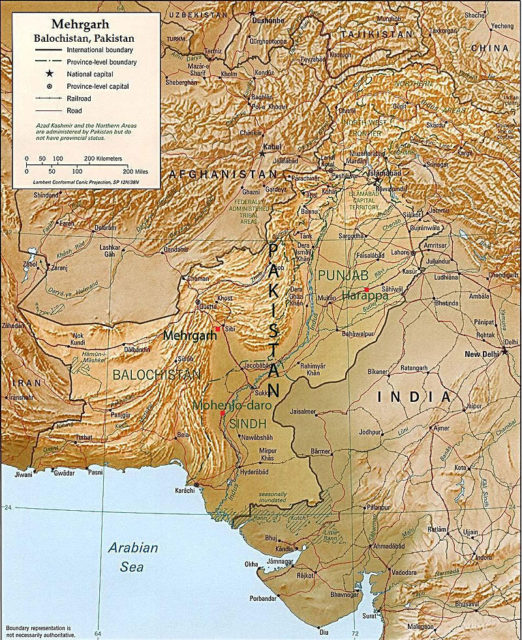Amulets have historically been used to ward off evil and bring good fortune to their wearers. In addition, one particular amulet has connected ancient and modern technologies in an intriguing way. Discovered in Mehrgarh, Pakistan, the 6,000-year-old wheel-shaped amulet is the earliest known example of lost-wax casting, a technique that duplicates metal objects. NASA and other technology-based industries have also used the same technique for decades.

Researchers from Ipanema working at the SOLEIL synchrotron in Paris, determined how the amulet was created using photoluminescence imaging. This technique shines a light on an object and then measures the amount of light that bounces off. Each material reflects a different amount of light, and researchers were able to conclude that the amulet was made of pure copper. Copper oxide “bristles” inside the amulet reveal that the copper absorbed oxygen during the casting process.
The researchers’ findings, published in Nature, showed that the amulet was a lone piece. Because of this, they surmised that it was created using lost-wax casting to duplicate an original metal object. In the lost-wax casting process, the wax is used to make a copy of the original object and then a mold is put around the wax. The wax is heated, poured out, and liquid metal – copper in the case of the amulet – is poured in. The mold is then broken apart when the metal has cooled, revealing the newly formed duplicate, Mail Online reported.

The technique of lost-wax casting has withstood the advent of modern technology. Although it is a simple process, it can be used to create complex designs and remains popular with artists.
Renamed “investment casting,” the technique is also used to form metals for the aerospace, aeronautics, and biomedicine industries. Several components for NASA’s International Space Station, the Curiosity Mars Rover, space shuttles, and the 2011 Messenger spacecraft were made using the technique.
